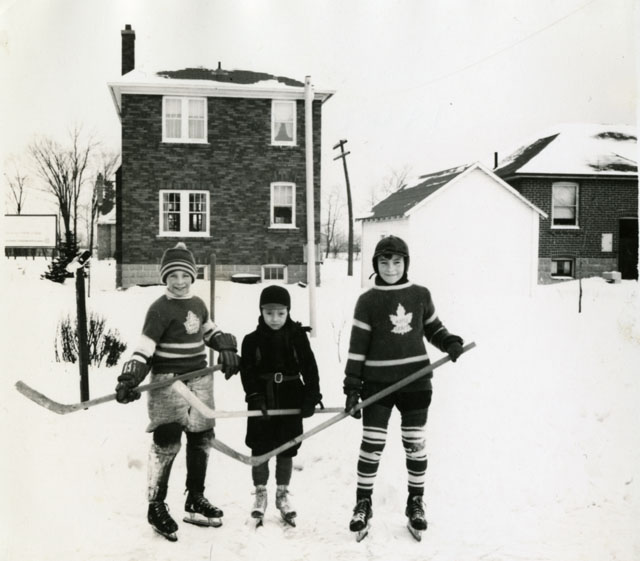Mississauga has produced its fair share of hockey greats.
There’s Hall of Famers, Paul Coffee, Paul Henderson and Johnny Bower. National sledge hockey players Dominic Cozzolino and Danica McPhee.
Former player and current Pittsburgh Penguin assistant GM Jason Spezza grew up and got his start here and continued to travel back to Mississauga to train in the off-season.
Current professional hockey players from Mississauga include Kelly Babstock of the PWHL’s Boston team, the Washington Capitals’ Dylan Strome, and the Toronto Maple Leafs’ John Tavares.
However, if you want to know who’s had the greatest influence on the game, look no further than Charlie Patterson and Arthur Wood, two Cooksville hockey dads whose influence stretches around the world.
Back in the late 1950s, it wasn’t unusual for hockey players to be missing a tooth or two. Protective hockey gear was rudimentary at best.

Cooksville hockey dads Charlie Patterson and Art Wood were inspired to invent the modern hockey helmet and mouthguard to protect young hockey players from concussions and broken teeth. Hockey was played with little to no equipment like these kids enjoying a game in Port Credit in 1942. (Photo courtesy of Mississauga Library)
Both children and professionals wore the same type of headgear, if they wore anything at all: a leather football-style covering that hadn’t really been updated since its debut in the late 1920s.
Then Patterson’s son suffered a concussion while playing and that got his dad thinking. What could he design that would be light enough for his son to wear in a game, yet also durable enough to protect his head and brain from injury?
His neighbour and Cooksville Hockey Association coach Arthur Wood was thinking about sports safety too.
Wood may have loved the game but as Canada’s first pediatric dentist, he didn’t like the steady stream of youngsters filing into his office to fix their ‘bloody chicklets’ – busted teeth from the good old hockey game.
He once estimated he treated over 200 hockey-related injuries each year.
So Woods and Patterson teamed up to protect hockey players, both big and small.
Patterson, a mechanical supervisor at Brewers Retail, knew of European helmets that used rigid plastic, rather than leather and he set to work improving on that initial design.
He added ridges on the top and back of the helmet – all the better to absorb the impact of a high stick, a bang up against the boards or a fall on the ice.
Charlie created Perdix Research in Cooksville to develop and market his new helmet, which was made of tough, high-density polyethylene, weighed seven ounces and guaranteed to be shatter resistant up to 40 degrees below zero – in either Celsius or Fahrenheit – good for even the coldest of arenas.
Woods designed the accompanying mouthpiece, which he called the ‘mug guard’.
Over 3,000 players in the Toronto Township Hockey Association tested Patterson and Wood’s inventions, wearing the helmets and mouthguards in games, making Mississauga the place where modern hockey safety equipment first hit the ice.
The helmet sold for 6 dollars and was adjustable for players from age 4 to adult.
It sold for six dollars and by 1964 it was being used by Team Canada at the Olympics in Innsbruck, Austria.
In 1971 the Canadian Amateur Hockey Association made hockey helmets mandatory. It would be another eight years before the NHL followed suit, mandating helmets for all new players entering the league.
In later years, Charlie designed helmets for racing jockeys and their steads, including Canada’s famous thoroughbred Secretariat, to protect his head during transit. He also designed a detachable faceguard for football helmets, a less dense hockey puck to reduce injuries and an unbreakable urethane hockey stick.
Woods also continued to work on safety issues, including designing a ‘kiss and ride’ drop-off program for schoolchildren and parents to reduce accidents.
Both Charlie Patterson and Arthur Woods were inducted into the Mississauga Sports Hall of Fame in 1984.
You can hear more stories about the people and events that helped shape Mississauga via our podcast, We Built This City: Tales of Mississauga, available on your favourite podcast platform or from our website.
